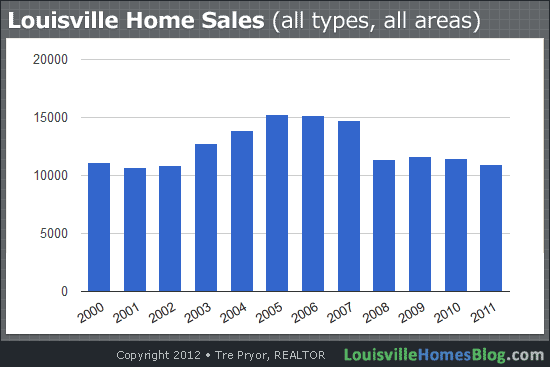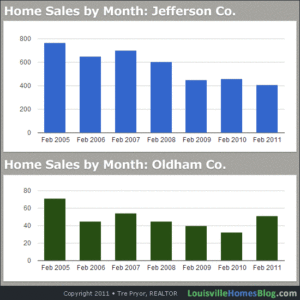I learned the other day that a good friend was becoming a Realtor. Knowing what I know about the Louisville real estate market, I wondered to myself, “What in the world is she thinking?!”

This brought me to the larger question: “How many Realtors have left the business due to the housing recession?”
To learn the answer I went straight to the source. Lisa Stephenson is the Executive Vice President at the Greater Louisville Association of Realtors (GLAR) and she was kind enough to sit down with me and shed some light on where we stand today.
First, it’s important to understand that one can be a licensed real estate agent and not be a Realtor. Realtors are held accountable to both the laws (regulations) of the industry and an additional Code of Ethics.
However according to Stephenson, “most (real estate) licensees in this market are Realtors.”
Given that the barrier to entry to become a Realtor is rather low, compared to other occupations, I wondered if the approximately $1,500 required to pay all the licenses, fees, and required insurance would be enough to keep people from joining the workforce.
“For the years I’ve been here the number of Realtors has closely matched sales,” replies Stephenson. “Even 15 years back we had about 3,300 members.”

The high point of membership was in 2007 when new Realtors were joining the industry at a record pace. That year, 14,748 properties were sold in Louisville, and GLAR membership ran up to 4,500!
Just five years later, that number is 3,500, or a membership decline of about 22 percent.
I wanted to learn more about how many Realtors work part-time vs. full-time and what percentages held multiple jobs but that information is not currently captured.
The National Association of Realtors (NAR) does publish survey data on similar topics. Such as what kind of occupations current Realtors come from.
Most members begin their careers in other fields and bring a wide range of expertise and experience to the profession; only 5 percent report real estate as their first career. Previous full-time careers include management, business or financial, 18 percent; sales or retail, 15 percent; office or administrative support, 10 percent; and education, 7 percent. Twelve other categories were each 5 percent or less; 17 percent were “other.”
When wondering about the breakdown by sex, this survey had the following result.
The typical NAR member has 11 years of experience and works 40 hours per week; 60 percent are women, who account for 55 percent of brokers and 66 percent of sales agents.
Now that home sales are on the upswing, Stephenson expects GLAR membership to rise as well.


